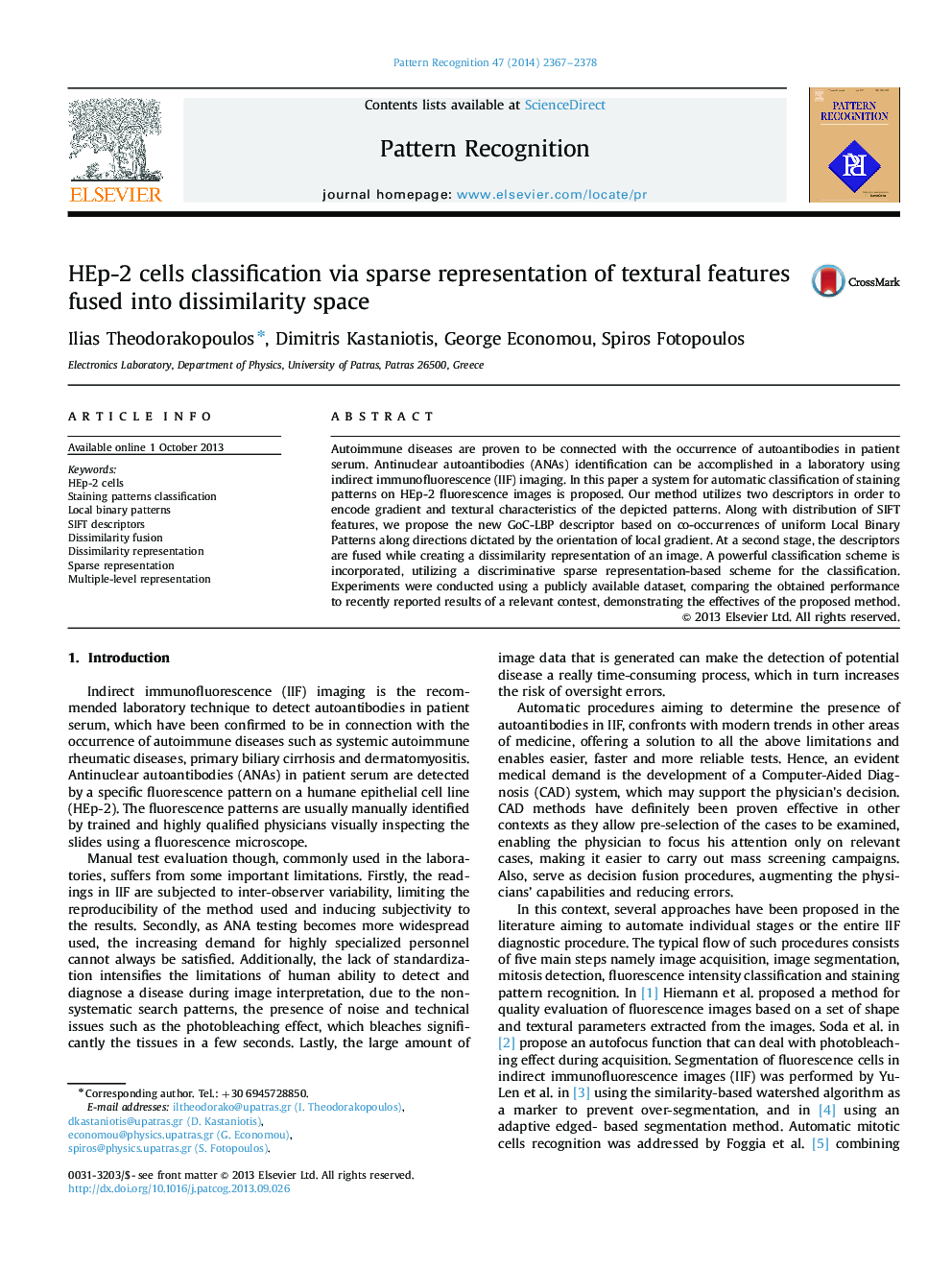| Article ID | Journal | Published Year | Pages | File Type |
|---|---|---|---|---|
| 530766 | Pattern Recognition | 2014 | 12 Pages |
•A method for HEp-2 cells classification based on fluorescence staining patterns is proposed.•Gradient and textural features are captured using two descriptors.•The descriptors are fused into the dissimilarity space.•A sparse representation-based classification scheme undertakes the final classification.•Classification accuracy up to 75.1% in cell level and 85.7% in image level is obtained.
Autoimmune diseases are proven to be connected with the occurrence of autoantibodies in patient serum. Antinuclear autoantibodies (ANAs) identification can be accomplished in a laboratory using indirect immunofluorescence (IIF) imaging. In this paper a system for automatic classification of staining patterns on HEp-2 fluorescence images is proposed. Our method utilizes two descriptors in order to encode gradient and textural characteristics of the depicted patterns. Along with distribution of SIFT features, we propose the new GoC-LBP descriptor based on co-occurrences of uniform Local Binary Patterns along directions dictated by the orientation of local gradient. At a second stage, the descriptors are fused while creating a dissimilarity representation of an image. A powerful classification scheme is incorporated, utilizing a discriminative sparse representation-based scheme for the classification. Experiments were conducted using a publicly available dataset, comparing the obtained performance to recently reported results of a relevant contest, demonstrating the effectives of the proposed method.
